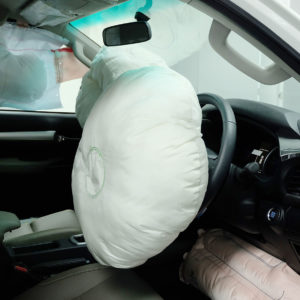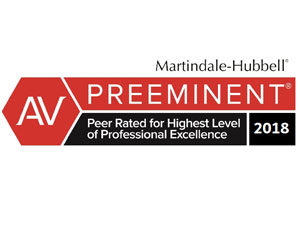$5.5M
$5.1M
$4.2M
$2.9M
$2.8M
$2.5M
$2.4M
$2.2M
Have you been a victim of defective products? Are you eligible for compensation due to product liability? Have you or has someone in your family fallen victim to a defective product, resulting in injury or loss of life? The below section deals with different types of product liability and defective products.
Defective Products: A Summary
Dangerous or defective products result in the catastrophic injury or death of thousands of consumers each year in Florida and throughout the United States. Too often, consumers or bystanders are killed or caused to suffer a debilitating burn injury, brain injury, quadriplegia, paralysis, amputation, illnesses or other serious harm as the result of a dangerous or defective product.
According to Florida law, a product is considered defective when it is unreasonably dangerous to the user or consumer. There are generally three categories of product defects:
- Design Defects
- Manufacturing Defects
- Marketing Defects such as improper labeling of a product, inadequate warning or deficient instructions.
Florida's product liability laws were enacted to enable victims of dangerous or defective products to be compensated by those responsible for placing such products into the stream of commerce, as a method for greater consumer protection. This also includes breach of warranty.
Product Liability: Examples
Below, we explore various types of common defective products that result in injury.
Defective Automobiles
Motor vehicle defect cases arise when an automobile -- including its component parts and accessories -- is not designed and manufactured so that it is safe for its intended and foreseeable use. Since automobile accidents are foreseeable, motor vehicles should be designed and built to protect the driver and passengers in the event an automobile accident occurs. The ability of a motor vehicle to prevent or minimize injury to its driver and passengers in the event of a crash is referred to as the vehicle’s “crashworthiness.”
Most motor vehicles are carefully designed and manufactured, as the United States government has minimum safety standards with which all new passenger cars must comply. Tragically, some are not.
When an automobile manufacturer is careless in the designing or manufacturing of a motor vehicle, or attempts to cut corners on safety to improve profits, occupants can be seriously injured or killed, sometimes even in relatively minor collisions. These standards help to ensure that vehicles are safe; however, compliance with these minimum standards does not mean that a vehicle is crashworthy or safe for its intended use.
In addition, many automobiles that comply with the Federal minimum standards are still at risk of fuel fed fires which often result in death or severe burn injuries. The term “fuel fed fire” generally refers to post collision fires. These fuel fed fires are usually the result of fuel leaks due to defective fuel tanks, defective fuel systems or improper placement of fuel tanks or fuel lines so that they are at increased risk of being punctured.
The presence of a fuel leak dramatically increases the risk of a vehicle catching fire after a collision. Despite the danger of post collision fuel fed fires, there are no Federal standards for the safe design, manufacture or placement of fuel tanks or fuel systems on motor vehicles. Automobile manufacturers have the ability to minimize the risk of fuel fed fires in a collision without substantially increasing the cost of the vehicle. The installation of anti-siphoning devices effectively reduces the circulation of fuel following a collision. Fuel tank bladders reduce the risk of leaks in the event of an automobile accident.
These and other automobile design or manufacturing defects dramatically increase the risk of major, life altering injury or death in car accident collisions which occupants would otherwise survive without injury or with only minor injuries.
When a dangerous or defective motor vehicle causes wrongful death or serious injury, the vehicle manufacturer, component part manufacturers and dealers may be held liable under Florida’s Product Liability laws.
Defective Seat Belts
Designed and manufactured properly, seat belts save lives and prevent injuries every day. Unfortunately, not all seat belts are free of defects. When seat belt latches become unlatched or opened in a collision or when those latches break, the consequences can be catastrophic. The occupants of a motor vehicle can suffer serious injuries or death when seat belts do not function properly. Defective seat belts can turn an otherwise survivable impact into a deadly collision.
Defective Airbags
Airbags save countless lives and prevent many occupants of motor vehicles from being injured when they function properly. A defective airbag however, can cause death or serious injury to the occupants of a motor vehicle. Very often people are killed or badly injured when a defective airbag fails to deploy or inflate in a collision.
When a defective airbag inflates in the absence of an impact it can cause the driver to lose control of his vehicle and crash leaving occupants with serious or fatal injuries.
The violent deployment of the airbag itself can also cause fractures, burns, eye damage, and other severe injuries. This is especially tragic when it occurs in the absence of an impact or in the event of a low speed collision when air bag deployment should not occur.

These airbag failures are often due to inadequate crash testing or defective design. Some manufacturers’ safety standards for airbags have been criticized as being clearly deficient.
When airbag failure causes death or serious injury, the manufacturer along with the distributors and the dealers may be held liable under Florida’s Product Liability laws.
Defective Seat Backs
Each year thousands of people are injured due to defective automobile seats. While there are several component parts of the automobile seats that can fail if defective (including recliner mechanisms, fasteners and seat tracks), the most common defect is with the seat back. Automobile seat backs should operate as a restraint, mainly in a rear end collision, much the same way a seatbelt functions in a head on collision. When a defective automobile seat back fails to restrain a vehicle occupant in a collision, the results are usually devastating.
Too frequently, defective automobile seat backs collapse or break in a rear end collision. When a seat back failure occurs in a collision, vehicle occupants are often ejected or thrown into the steering wheel, dash board or other parts of the interior of the vehicle or even into other occupants. When a seat back failure occurs in the absence of an impact, the driver can lose control of the vehicle resulting in a collision.
In either event, a defective automotive seat back failure can and often does cause the vehicle occupants to suffer catastrophic spinal cord injuries and resulting quadriplegia, paraplegia or paralysis.
These seat back failures are often due to inadequate crash testing or defective design. General Motors is often implicated in defective automobile seat back cases; yet GM and most major automobile manufacturers have refused to make inexpensive design changes to their automobile seat backs which would reduce or even eliminate these dangerous failures.
Defective Tires/Tread Separation
Each year, thousands of people suffer serious injury and death as a result of defective tires. In fact, according to the National Highway Traffic Safety Administration (NHTSA), over 8,000 traffic accidents every year resulting in death or serious injury are caused by tire failure. There are various ways in which a motor vehicle tire may fail including uneven tread wear due to under inflation or over inflation, road hazards and defects in the design or manufacturing process. The tire failures generally caused by design or manufacturing defects include tire bead failure also called bead fractures, zipper failure, multi piece wheel or rim explosions and tread separation also called tread belt separation.
The most common failure of steel belted radial tires reported is tread separation where the tread physically separates from the main carcass of the tire. Almost all tires manufactured today are steel belted radial tires. Tread separation usually occurs when the rubber used to make the tire does not bond or adhere properly to the steel belts. This poor adhesion is often the result of contamination by moisture, rust, sulfur or chemical solvents used to remove excessive sulfur from steel belts that have become stale or the use of expired adhesives among other causes.
Examples of tires that have had tread separation linked to design or manufacturing defects include the Firestone ATX, Firestone ATX II, Goodyear Load Range E tires typically found on 15 passenger vans, Uniroyal-Goodrich tires, Firestone Wilderness tires, Continental General tires, Firestone Steeltex tires, Cooper tires, B F Goodrich tires, Bridgestone tires and others.
When tread separation occurs, vehicles often roll over or drivers are caused to lose control and people are almost always killed or seriously injured. The most catastrophic injuries and death usually involve SUVs that roll over after a defective tire blow out.
When tire tread separation causes death or serious injury, the manufacturer along with the distributors may be held liable under Florida’s Product Liability laws.
The defective tire lawyers at Hannon Legal Group have successfully litigated many cases where a dangerous or defective product resulted in death or catastrophic injury.
If you or someone you know has been injured or killed due to tire failure, tire defect, tire blow out, tread belt separation, tire bead failure, bead fracture, mulit piece wheel explosions, multi piece rim explosions, zipper failure or tread separation contact a Florida defective tire lawyer at Hannon Legal Group today.
Defective Toys & Other Juvenile Products
Safety testing by manufacturers of toys and other products for children is often inadequate or even non-existent. Even worse, once tragedy strikes neither the manufacturing industry nor the government acts as swiftly and urgently as they should in order to warn the public or recall and remedy these dangerous products.
In fact, and by way of example, the Consumer Product Safety Commission, in March 2005, fined Graco Children’s Products Inc. $4 million for failing to report hundreds of injury incidents as well as some deaths. Many infants and children are allowed to die or suffer serious physical injury before necessary action is taken to prevent other kids and families from suffering the same terrible fate.
Leading child product manufacturers such as Graco, Kolcraft, Evenflo, Century and Fisher-Price, among others, nevertheless, post information about their recalled products on their websites (Further important information regarding recalled infant and juvenile products is also posted at the Consumer Product Safety Commission).
However, what too often happens is that manufacturers stop making or finally decide to modify their defective products, when it is already too late, after children have been badly injured or killed. Manufacturers often fail to make a timely recall of the defective products already in the hands of unknowing families.
Even when they do attempt to recall products, manufacturers may fail to conduct adequate informational campaigns to warn parents of the hidden dangers in the products being used by their children. Parents, therefore, continue to use or acquire the dangerous items at thrift stores, second-hand stores, at garage sales or as hand-me-downs, often resulting in catastrophic consequences.
Examples of Child Products and Toys Endangering Kids
- Drawstring clothing
- Cribs and playpens
- Infant swings, carriers and car seats
- Infant walkers
- Bean bag chairs
- Infant bath seats and bath rings that lack warning labels
- Defective Playgrounds
Defective Swimming Pools, Pumps, and Drains
The U.S. Consumer Product safety Commission (“CPSC”) reports that “there are approximately 250 accidental drowning deaths of children under the age of 5 each year in swimming pools and an estimated 2,300 children were treated in hospital emergency rooms for pool submersion injuries in 2004 – mostly in residential pools.”
Suction entrapment refers to the horrifying situation where a bather, usually a child, becomes stuck to a pool drain and held under water by the increased suction that is created when a drain is blocked by the bather’s body. The force of that suction is often powerful enough to hold an adult under water; however, it is usually children who fall victim to suction entrapment. Spa or hot tub drains pose the same danger. Our Miami, Florida dangerous swimming pool lawyers know that defective pool pumps, aging, broken, loose or missing drain covers and poorly designed pools are the culprits.
The CPSC received reports of 147 suction entrapment incidents between January 1985 and March 2002. 36 of those resulted in death. The CPSC admits that those numbers are likely inaccurate since most suction entrapment incidents are classified by emergency personnel as a drowning or near drowning. According to Pool & Spa News, “[t]hese incidents range from hair becoming entangled in a drain cover to entire limbs getting sucked into uncovered drains.”
Children are often attracted to swimming pools and spas and fascinated with the current produced by their circulation systems. As a result, children are at higher risk of becoming the victim of a suction entrapment accident. The results are predictably catastrophic. There is nothing more heart wrenching than learning of a child whose life was lost or who suffered anoxic brain damage and must live out his or her life in a persistent vegetative state or coma.
Historically the pool industry has resisted proposed legislation that would require safety measures to protect against suction entrapment accidents even though there are several inexpensive solutions. Single drain pools and spas are the most dangerous. The elimination of single source suction is one solution to the problem. Pools with dual main drains allow air to flow through the second drain when the other becomes covered which, in turn drastically reduces the suction of the covered drain.
Another solution to the suction entrapment problem is the use of a safety vacuum release system (SVRS). An SRVS can detect when a drain is blocked by the buildup of suction and will automatically shut off a pool pump or interrupt the water circulation to prevent a drain entrapment. The use of Anti-vortex drain covers or anti-entanglement drain covers which are designed to prevent hair from becoming entangled can also eliminate or reduce the incidence of suction entrapment accidents.
The CPSC recommends “layers of protection” including barriers around pools such as a fence with self–closing, self-latching gates completely surrounding your pool to prevent access. Pool alarms and safety covers are also recommended along with close supervision of young children which is crucial in preventing accidental drowning deaths.
Defective Generators
Frequent hurricanes and tropical storms in Florida often leave homes without electricity. Portable generators can be useful when temporary electric power is needed, but they can also be dangerous causing carbon monoxide (CO) poisoning from toxic exhaust, electric shock or electrocution and fires. Thousands of Florida families have purchased portable generators to temporarily supply power to their homes until their electricity is restored after a storm.
Consumers may not realize that many generators produce and emit carbon monoxide exhaust similar to an automobile engine. According to the Consumer Product Safety Commission (CPSC), “[e]very year, people die in incidents related to portable generator use. Most of the incidents associated with portable generators reported to CPSC involve carbon monoxide poisoning from generators used indoors or in partially-enclosed spaces.”
The CPSC received 222 reports of deaths related to carbon monoxide poisoning associated with portable generators in the six year period from 2000 through 2005. They noted that many of these deaths “occur following severe weather events that typically cause power outages” The CPSC provided a recommendation for a product warning label to be affixed to portable generators after determining that current warning labels on generators are ambiguous and do not adequately advise the user on how to avoid the hazard of carbon monoxide poisoning. The CPSC also noted that improving warning labels alone may be insufficient as a sole means of addressing the carbon monoxide poisoning hazard. The CPSC is considering additional regulatory and non-regulatory alternatives which could help to further reduce the number of carbon monoxide related deaths and injuries associated with the use of portable generators.
Product Liability: Medical Products
For a more detailed discussion of the below categories, please click the link to the page.















